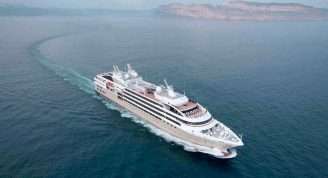Description
Historic cities, golden sands
Your expedition starts in the fabled city of Lisbon, built on seven hills along the shores of the River Tagus. Explore one of southern Europe’s most enchanting cities before kickstarting your adventure. Soak up Porto Santo laidback vibe, with its mix of picturesque scenery, gently rolling hills and miles of undisturbed sandy beaches.
Picture-perfect vistas
Nicknamed the ‘Garden of the Atlantic’, Madeira rises majestically out of the ocean in riotous shades of green. Be sure to sample Madeira’s famed fortified wines in one of the many bars and restaurants before sailing to the Canary Islands
Volcanic paradise
You will start your Canarias experience exploring Lanzarote’s volcano-sculpted landscape and legendary beaches. In Tenerife, you’ll unearth a unique landscape of craters, volcanic cones, ancient rocks and streams of petrified lava. Discover some of the best hiking trails in La Palma before sailing to El Hierro and La Gomera, the islands at the edge of the Canaries.
Big, bold, colourful Dakar
The last call in the Canaries will be Gran Canaria, with its subtropical valleys, palm-dotted oases, pine forests and jagged mountain ridges. After three relaxing days at sea, your expedition comes to an end in Dakar, Senegal’s colourful and animated capital. Enjoy a guided tour taking in the city’s main landmarks before you head back home.









